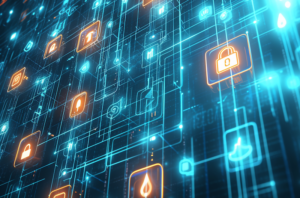Introduction

In the ever-evolving landscape of cybersecurity, protecting sensitive data and systems has become increasingly complex. One crucial technology in this defense arsenal is biometric authentication, which uses unique biological traits for identification and access control. However, as cyber threats become more sophisticated, traditional biometric systems face new challenges, particularly from AI-generated deepfakes. This is where biometric liveness detection comes into play, providing an essential layer of security.
What is Biometric Liveness Detection?
Biometric liveness detection is a technology designed to ensure that the biometric sample being captured originates from a live person who is physically present at the point of capture, rather than from a spoofed or fake representation. This technology is vital for verifying the authenticity of biometric data, such as fingerprints, facial recognition, and iris scans.
There are two primary types of liveness detection:
- Active Liveness Detection: This method requires user interaction, such as blinking, smiling, or moving their head. These actions prove the presence of a live person, making it difficult for attackers to use static images or videos.
- Passive Liveness Detection: This method works in the background without requiring any user interaction. It employs advanced algorithms to detect subtle physiological signs like skin texture, blood flow, and involuntary eye movements.
The Importance of Biometric Liveness Detection
Combating Deepfakes
Deepfakes are hyper-realistic digital manipulations created using artificial intelligence. These synthetic media can convincingly mimic real people’s appearances and behaviors, posing significant risks to biometric security systems. Attackers can use deepfakes to bypass traditional biometric authentication by presenting a realistic but fake version of a person’s face, voice, or other biometric traits.
Biometric liveness detection is crucial in this context. By requiring live interaction or detecting signs of life, liveness detection technologies can effectively differentiate between genuine biometric samples and deepfakes, thereby thwarting such sophisticated spoofing attempts.
Enhancing Cybersecurity

Incorporating liveness detection into biometric systems significantly enhances overall cybersecurity. It adds an extra layer of verification, making it exponentially harder for cybercriminals to breach security measures using counterfeit biometric data. This is especially important for industries that handle sensitive information, such as banking, healthcare, and government services.
Building Trust in Biometric Systems
As biometric authentication becomes more widespread, ensuring its reliability is critical. Liveness detection boosts user confidence by providing robust protection against identity theft and fraud. It assures users that their biometric data is secure and that the systems they interact with can reliably distinguish between them and an imposter.
Implementing Biometric Liveness Detection
For IT professionals looking to enhance their organization’s security posture, integrating liveness detection into existing biometric systems is a strategic move. Here are some steps to consider:
- Evaluate Existing Systems: Assess current biometric systems to identify vulnerabilities and determine where liveness detection can be integrated.
- Choose the Right Technology: Select between active and passive liveness detection based on your organization’s needs. Active detection might be suitable for high-security environments, while passive detection offers a seamless user experience.
- Regularly Update and Test: Keep liveness detection algorithms up to date to counter evolving deepfake technologies. Regularly test the system’s effectiveness to ensure it meets security requirements.
- Educate Users: Train users on the importance of liveness detection and how to interact with biometric systems that employ this technology.
Conclusion
Biometric liveness detection is a critical component in the fight against the growing threat of deepfakes and other sophisticated cyber attacks. By ensuring that biometric data comes from a live, present individual, this technology fortifies authentication systems and protects sensitive information from malicious actors. And for IT professionals in particular, integrating liveness detection into security protocols is not just an option but a necessity in the age of advanced digital threats.
–
May 14, 2024 – by Cass Kennedy







Follow Us